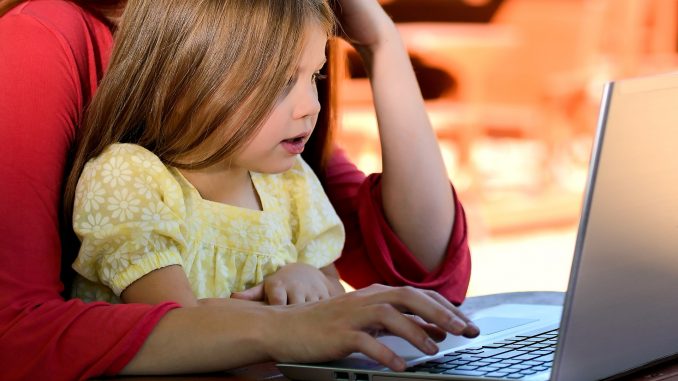
According to a survey, 91% of children in the US aged 2 to 17 regularly play video games. These figures are on the rise, with the biggest increases being in the younger categories – children aged 2 to 5 saw the largest increase. But, in an age where children, teenagers, and adults alike are more addicted to technology than ever, is it time that parents step up and limit how long their kids are spending glued to their screens?
Screen time is considered to be the time an individual spends watching TV, using computers, tablets, smartphones, handheld computer games or any other video games. This can be interactive; for example, games, using online tools to complete activities like drawing, or communicating over messenger, email or skype. Or, it can be not interactive, like watching movies, YouTube videos or TV shows.
Like anything, screen time comes with various benefits, but also some risks. Some of the benefits can include:
- It can help children with their learning. For example, researching topics for homework or playing educational games.
- Parents can get involved with what their children are watching and playing.
- High quality games can enable children to learn and practice skills like creativity, problem solving and more.
Some of the risks associated with too much screen time are:
- Physical problems like headaches, fatigue, neck pain and sore eyes.
- It can lead to a less active lifestyle, which increases the risk of obesity and other health conditions.
- Too much screen time can affect children’s social and language development.
- Children can miss out on developing other interests, like sport, music, reading etc.
- Children who regularly use the internet can be exposed to dangerous people or content
Managing the risks
If used correctly, technology can bring huge benefits to your child. However, as mentioned above, there are some risks. How can these risks be reduced? There are a number of steps that parents can take to improve their child’s safety. Some of these are:
- Make sure your child takes regular breaks from computers, tablets or smartphones
- Encourage an active lifestyle and ensure your child takes part in other activities.
- You can manage the safety risks by checking your privacy setting and having the right parental controls. You can also teach your child about how important it is to stay safe online; for example, not sharing their personal details with anyone.
How much screen time is recommended?
There are no official recommendations for how much screen time is okay, and different organisations and studies offer different advice on what the limit should be. For example, a recently released study recommends that screen time should not go over two hours a day. It says that any more than this can affect a child’s cognitive skills. However, the study did note that only 37% of children in the US currently meet this recommendation.
The American Academy of Pediatrics has guidelines for how parents should limit and monitor their child’s screen time. They recommend that:
- Children under 18 months should only watch small amounts content designed for their age group, and only under adult supervision.
- Children aged 2 to 5 should be limited to an hour of screen time. Like with younger children, this should be age appropriate and supervised.
- School aged children should use technology in moderation, and alongside healthy and balanced behaviour.
All children are different, and with so much conflicting advice, it’s important that parents understand the risks so they can manage them correctly. Common sense is key when it comes to setting the right boundaries for children’s screen time, and making sure they are safe online.


Leave a Reply